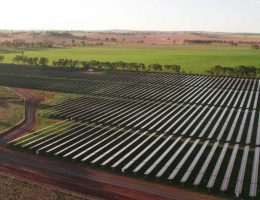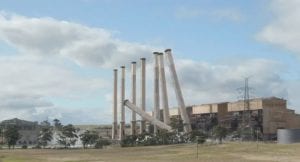It’s that time again – Australia’s quarterly emissions data has been released by the Department of Industry, Science, Energy and Resources (DISER). It shows that the ‘tug of war’ between renewable energy decreasing emissions and a fossil gas boom increasing emissions hasn’t shifted. The government’s climate policies, like the ‘Climate solutions fund‘ and the ‘Low emissions technology roadmap‘ both have a near-zero impact on emissions. The other factor in Australia’s emissions that has been slowly but significantly ratcheting upwards is the transport sector.
COVID19 has blasted a hole through the climate issue. The fossil fuel industry, already vulnerable, has taken a notable hit, with Bloomberg now suggesting that peak oil is either here or just around the corner. Exxon Mobil just saw its biggest write-down in history, and one of the biggest oil industry write-downs, similar to BP’s after its disastrous oil spill. In the power sector, renewables are “immune” to coronavirus.
Buried in Australia’s latest emissions data are a few fascinating insights into how Australia has been hit by COVID19.
Australia’s transport climate sugar hit is record-breaking, but it’s over already
Just as the drought hit Australia’s agriculture emissions, COVID19 has hit the transport sector emissions. Humans moving around also carried a deadly, novel respiratory disease: and as such, movement had to be regulated. Unadjusted transport emissions for the quarter were 19 megatonnes of CO2-e. The last time Australia saw a quarter with emissions that low was June 2002. By my reckoning, there has never been a year-on-year decrease in a sector’s quarterly emissions of that magnitude in Australia ever, and that’s including the notoriously suspect land use sector.
The drop in transport emissions has had the biggest, most noticeable hit on Australia’s emissions, plunging them right down to what they were at the beginning of 2005, according to the latest data:  There has never been a quarter in the history of that dataset where transport emissions fell relative to the start of 2005. But there it is – on the bottom end of the chart, among electricity and agriculture. “We see data out today saying that our emissions are down 3 per cent annually, and that we’ve smashed our Kyoto targets by 459 million tonnes. That’s almost a year’s worth of emissions, there’s very few countries in the world that can boast that kind of outcome”, boasted Taylor earlier this week. “How much of this reduction was COVID responsible for?”, asked one enterprising journalist. “I’m not going to break it down”, Angus replied, evasively. “The point here is they were coming down before COVID”.
There has never been a quarter in the history of that dataset where transport emissions fell relative to the start of 2005. But there it is – on the bottom end of the chart, among electricity and agriculture. “We see data out today saying that our emissions are down 3 per cent annually, and that we’ve smashed our Kyoto targets by 459 million tonnes. That’s almost a year’s worth of emissions, there’s very few countries in the world that can boast that kind of outcome”, boasted Taylor earlier this week. “How much of this reduction was COVID responsible for?”, asked one enterprising journalist. “I’m not going to break it down”, Angus replied, evasively. “The point here is they were coming down before COVID”.
As you can see from the chart, renewable energy (long-opposed by Angus Taylor) and agriculture (hit by a drought) were the only two sectors coming down before COVID. Between the June quarter 2020 and the same period in 2019, Australia’s emissions are about ten megatonnes of CO2-e lower. A full six of those megatonnes comes from vehicles and planes standing still due to the spread of a global pandemic. I broke it down for you Angus: sixty percent of the credit goes to a literal virus.  So how long will that sugar hit last? Not long. This report period covers the deepest dip in Australia’s combustion engine usage. We can get a rough estimate of this using Apple’s mobility data, comprised of the times Australians requested to get directions using the Apple maps software aggregated into a singe dataset. Victoria saw a significant drop during its own struggles with COVID19, but according to Australian Bureau of Statistics data, the state comprises 3.9 million of Australia’s 14.7 million registered passenger vehicles (about 27%), suggesting the transport emissions drop in following quarters will be noticeable but nowhere near as significant as this quarter’s drop.
So how long will that sugar hit last? Not long. This report period covers the deepest dip in Australia’s combustion engine usage. We can get a rough estimate of this using Apple’s mobility data, comprised of the times Australians requested to get directions using the Apple maps software aggregated into a singe dataset. Victoria saw a significant drop during its own struggles with COVID19, but according to Australian Bureau of Statistics data, the state comprises 3.9 million of Australia’s 14.7 million registered passenger vehicles (about 27%), suggesting the transport emissions drop in following quarters will be noticeable but nowhere near as significant as this quarter’s drop.
 Renewable energy really is immune to COVID
Renewable energy really is immune to COVID
The relatively unsurprising part of the report is that the growth of renewable energy continues to be the only sector undergoing a structural decline in emissions – in spite of the government’s efforts, not because of them. The Labor party’s renewable energy target boosted the industry and global government interventions have led to massive deployment, huge price drops in renewables and a consequent situation in Australia where the default new form of any electricity generation will be zero carbon.
The electricity generation data in the report support this – showing not just an increase of wind and solar but a steady, significant decline of both coal and gas. These data extend to the end of September.
 There’s something fishy about fugitives
There’s something fishy about fugitives
“39.3 per cent of Australia’s total emissions are generated by the production of exports for overseas markets”, highlighted Minister Taylor, in a press release for the new report. It’s massive, and most of that mass comes from the extraction, processing and transport of fossil gas. It has sky-rocketed, and because doing these things is emissions intensive, so has the carbon footprint of carbon extraction.
Interestingly, fugitive emissions seem to have stopped climbing upwards compared to previous quarters. The report says this is “due to CO2 injection in Western Australia and reduced levels of flaring”, but it seems it is mostly down to the exports of LNG freezing for a full year: this quarter’s total LNG exports are roughly the same as last years. On top of that, the department has implemented a new methodology for estimating fugitive emissions based on a new American study, resulting in a relatively significant revision of the historical and current data, compared to previous editions of the quarterly emissions report:
 The adjustments to Australia’s fugitive emissions data are relatively significant. In the latest data set, the quantity of fugitive emissions for 2018 was 51 MTCO2-e. In the data set produced this time last year, 2018’s fugitive emissions were 55 MTCO2-e. The government’s report cites a new study performed in America by experts at the Colorado State University. Though the study does seem much larger than those previous, fugitive emissions remain a very rough and ugly estimate, as acknowledged by DISER in pointing out the fact they are relying on companies reporting their own leakages. “Data on management behaviour cannot be readily modelled. Rather, information from companies on their management and leak detection outcomes to inform the national inventory will need to be collected through company reporting through NGERs”.
The adjustments to Australia’s fugitive emissions data are relatively significant. In the latest data set, the quantity of fugitive emissions for 2018 was 51 MTCO2-e. In the data set produced this time last year, 2018’s fugitive emissions were 55 MTCO2-e. The government’s report cites a new study performed in America by experts at the Colorado State University. Though the study does seem much larger than those previous, fugitive emissions remain a very rough and ugly estimate, as acknowledged by DISER in pointing out the fact they are relying on companies reporting their own leakages. “Data on management behaviour cannot be readily modelled. Rather, information from companies on their management and leak detection outcomes to inform the national inventory will need to be collected through company reporting through NGERs”.
Considering these significant revisions in the context of previous instances of large changes to emissions data in the LULUCF sector, it’s definitely worth waiting for some experts on fugitive emissions to weigh in on whether this is a valid change – particularly given the changes work very much in the government’s favour.
It may not seem like a big deal, but every new quarterly emissions report seems to come packaged with this ‘revisions-creep’ that edges each new ‘version’ of Australia’s emissions story slightly further downwards. At the very least, it needs some better explanations. 










